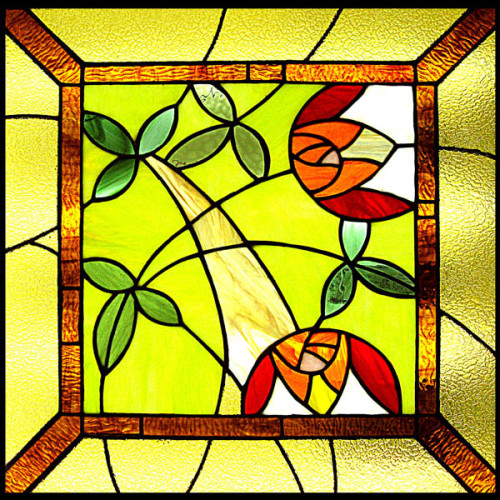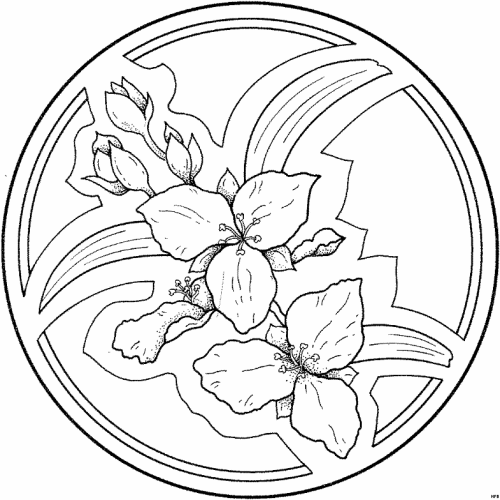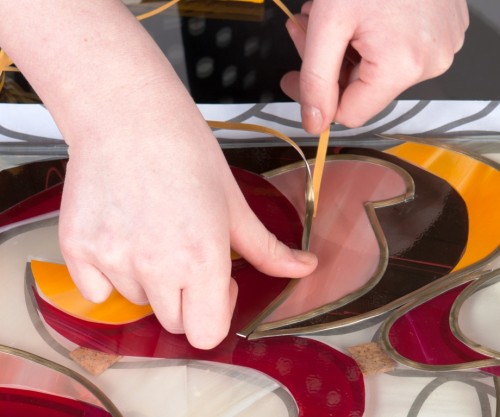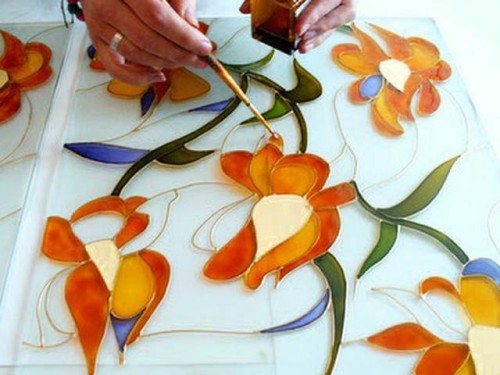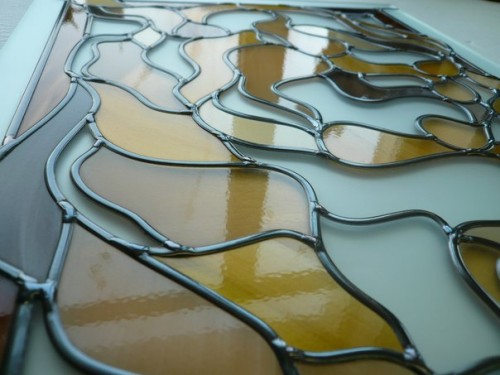The manufacture of this stained glass requires painstaking work and professional skills. Such stained -glass windows are very expensive, and it is not always possible to make them at home. According to classical technology, figuratively carved multi -colored pieces of glass are laid in an openwork frame of brass or lead. The Tiffany method - each mosaic element is edged along the contour of copper foil and is soldered into a monolithic canvas.
Content
There are several ways to create stained glass on glass with your own hands with minimal material costs and do not require special skill from you. For the filling method, aluminum wire and stained glass paints are required. It is even easier to make stained glass with gluing a translucent self -adhesive film.
Stained glass windows on the windows overlooking the south side look especially impressive. Sunlight favorably shows the compositional color scheme of stained glass.
Sketch and preparatory work to create stained glass
- To create a sketch of the stained glass window, the photo can be found on the Internet, you will need a sheet of millimeter paper or tracing paper. An ornamental pattern of the future stained glass is applied on paper with a thin pencil.
- Choose a stained glass pattern that is suitable for you and harmoniously fits into the interior. It can be a geometric pattern, flowers, an ornament of birds or insects. The scope for imagination is unlimited. Do not forget to mark the colors on a paper template.
- An ornamental lattice can be made from aluminum wire at least 1.6 mm thick or special lead tape on a self -adhesive basis. Such a tape is produced by various thicknesses and is tinted under the color of copper, brass or gray lead.
Buy a special palette of stained glass or aniline paints. For the second option - a set of multi -colored self -adhesive film is bought.
Manufacturing of the outline openwork grate of stained glass
For the contour, aluminum wire, lead tape on a sticky base or embossed paint for stained glass glasses are used.
- The processed glass sheet is located on a horizontal surface and degreased with acetone. According to the pattern of the ornament, the separation contours are bending from aluminum wires from aluminum wire. The curved wire is beaten a little with a hammer to give a larger plane and reliable adjustment to the glass surface.
- Under the glass sheet is a sketch of a stained -size stained glass. The wire is abundantly lubricated with PVA glue, adjusted along the contours of the picture and crushed by the load. Before gluing, the wire can be painted with golden, bronze or, in the color of copper, acrylic paint.
- The lead tape on a self -adhesive basis is bending and pressed to the glass in the place, focusing on the contours of the scoundrel of the stained glass under glass. Then the tape is rolled with a rubber roller.
- You can also use special embossed paint for the contour. Tubes with such paint are equipped with nozzles of various diameters, when lining, it does not spread and freezes with an even side.
The process of manufacturing stained glass with a bulk method
This method is good in cases where the processed glass canvas can be placed strictly horizontally.
- Prepare aniline paints for work. Dry colors are diluted with distilled water, stirred and thoroughly filtered through gauze. Then mix with the PVA emulsion to the consistency of the cream. In this form, the colors are well applied on the glass canvas and are well held on it.
- To check the saturation of the tone, a layer of paint is applied to a piece of glass and left until it dries. The tone is brightened with the addition of an emulsion, and is saturated with a pigment dye diluted in distilled water.
- A solution of colors is applied from the edge of the contour to the middle of the fragment. By adding new strokes with a brush, follow the thickness of the layer. The saturation of the stained glass picture depends on this. After applying the first layer, time is given for complete polymerization, then the following layers are applied until the necessary saturation is achieved.
- Covering in one color the necessary sections of the stained glass, the brush is thoroughly washed, degreased and wiped dry. The next tint is pouring after drying the neighboring areas to prevent influxes and mixing colors of different colors.
- Completely dried stained glass is covered with transparent varnish. The varnish will additionally express disparate stained glass elements and give the canvas shine. A rubber seal is glued along the perimeter of a window or doorway. When installing stained glass in the opening, the rubber seal will smooth out the irregularities and ensure a tight adjustment to the frame.
Application stained glass technique from self -adhesive film
The bulk method is not suitable for installed windows. You can make a stained glass window of a plastic window. This is the easiest way to make a stained glass window with your own hands.
To work with the film will be needed:
- mounting knife and scissors;
- rubber roller;
- marker and pencil;
- degreasing agent;
- a set of color self -adhesive film.
The process of stained -glass applications with a film:
- The window glass is thoroughly washed and degreased. Degrease can be acetone or alcohol solution. On a sketch in full -size, stained glass parts from a multi -colored film are cut.
- A sketch of stained glass pattern is attached to the back of the glass on a double tape. A lead tape is glued along the outline of the contour lines and rolled with a rubber roller.
- The inter -circuit space is neatly filled with colorful parts from an adhesive film cut through the template and smoothed with a rubber roller. The details are glued carefully, simultaneously smoothing and expanding air bubbles. Small air bubbles formed under the film are eliminated with a puncture with a needle and smoothing a roller. Details are made with a small assignment along the contour and are adjusted by cutting with a knife in the place.
- A similar procedure can be performed on the back of the glass. In this case, the throughput of light will decrease. Bilateral stained windows are recommended to be installed on the south side of the room.

